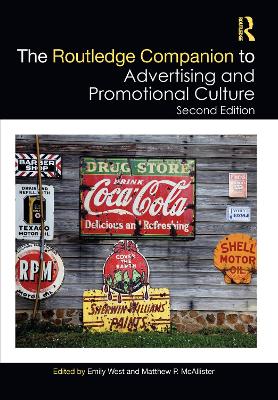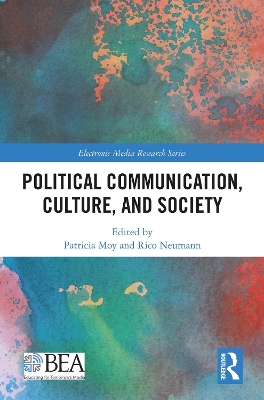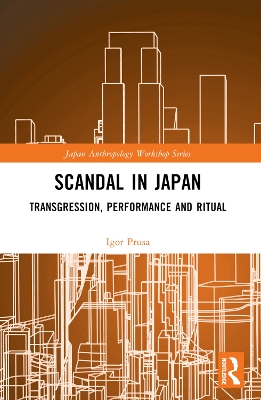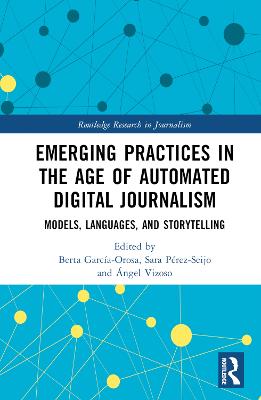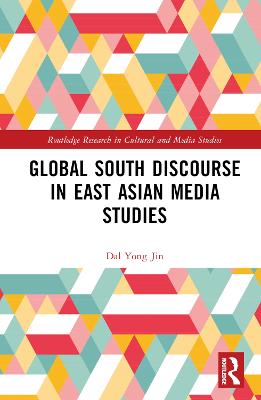News Journalism and Twitter
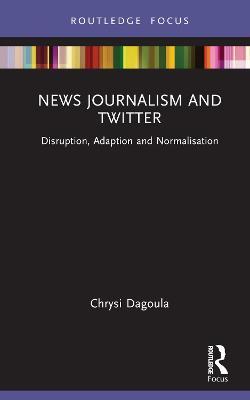 portes grátis
portes grátis
News Journalism and Twitter
Disruption, Adaption and Normalisation
Dagoula, Chrysi
Taylor & Francis Ltd
11/2022
126
Dura
Inglês
9781032139760
15 a 20 dias
Descrição não disponível.
List of figures
List of tables
Acknowledgements
Introduction
Chapter 1. The two dominant views of Twitter and news journalism
1.1. Twitter as enabling and benefiting news journalism
1.2. Twitter as distorting news journalism
Chapter 2. Punctuated equilibrium: disruption, adaption and normalisation
2.1. The institution of news journalism and punctuated equilibrium
2.2. Disruption as a commonplace event
Chapter 3. What news journalists say about their use of Twitter
3.1. Qualitative approach: research interviews
3.2. Questionnaire themes concerning the evolutionary impact of Twitter on news journalism
3.3 Journalists' evaluation of Twitter's costs and benefits to news journalism
Chapter 4. From disruption to normalisation: journalists' accounts on Twitter (2009-2021)
4.1. An account of the participants
4.2. The participants' first Tweets: 2009-2011
4.3. The 'presentation of self': how the participants chose to display their biographical information
4.4. Account core features: account activity, use of hashtags and mentions and formatting tweets and textual choices
Chapter 5. An evaluation of the direct and indirect costs and benefits of Twitter to news journalism
References
List of tables
Acknowledgements
Introduction
Chapter 1. The two dominant views of Twitter and news journalism
1.1. Twitter as enabling and benefiting news journalism
1.2. Twitter as distorting news journalism
Chapter 2. Punctuated equilibrium: disruption, adaption and normalisation
2.1. The institution of news journalism and punctuated equilibrium
2.2. Disruption as a commonplace event
Chapter 3. What news journalists say about their use of Twitter
3.1. Qualitative approach: research interviews
3.2. Questionnaire themes concerning the evolutionary impact of Twitter on news journalism
3.3 Journalists' evaluation of Twitter's costs and benefits to news journalism
Chapter 4. From disruption to normalisation: journalists' accounts on Twitter (2009-2021)
4.1. An account of the participants
4.2. The participants' first Tweets: 2009-2011
4.3. The 'presentation of self': how the participants chose to display their biographical information
4.4. Account core features: account activity, use of hashtags and mentions and formatting tweets and textual choices
Chapter 5. An evaluation of the direct and indirect costs and benefits of Twitter to news journalism
References
Este título pertence ao(s) assunto(s) indicados(s). Para ver outros títulos clique no assunto desejado.
Comparative Media;Greek Media;UK Media;New Media;Journalists;Journalist Perceptions;Social Media;Twitter;Digital Media;Journalism;Affect News Production;UK Medium;Journalist's Tweets;Public Engagement;Journalistic Ecosystem;News Journalism;Twitter's Impact;News Journalists;Punctuated Equilibrium;Blue Tick;Short Term Disruption;Twitter's Conventions;Functionalist Language;Public Infrastructure;Mobile Phone Text Messaging;Information Disorder;Free Speech Justifications;Social Networking Space;Twitter Users;Town Hall;Textual Choices;CNN Effect;Participant Journalists;Aggregate Reactions
List of figures
List of tables
Acknowledgements
Introduction
Chapter 1. The two dominant views of Twitter and news journalism
1.1. Twitter as enabling and benefiting news journalism
1.2. Twitter as distorting news journalism
Chapter 2. Punctuated equilibrium: disruption, adaption and normalisation
2.1. The institution of news journalism and punctuated equilibrium
2.2. Disruption as a commonplace event
Chapter 3. What news journalists say about their use of Twitter
3.1. Qualitative approach: research interviews
3.2. Questionnaire themes concerning the evolutionary impact of Twitter on news journalism
3.3 Journalists' evaluation of Twitter's costs and benefits to news journalism
Chapter 4. From disruption to normalisation: journalists' accounts on Twitter (2009-2021)
4.1. An account of the participants
4.2. The participants' first Tweets: 2009-2011
4.3. The 'presentation of self': how the participants chose to display their biographical information
4.4. Account core features: account activity, use of hashtags and mentions and formatting tweets and textual choices
Chapter 5. An evaluation of the direct and indirect costs and benefits of Twitter to news journalism
References
List of tables
Acknowledgements
Introduction
Chapter 1. The two dominant views of Twitter and news journalism
1.1. Twitter as enabling and benefiting news journalism
1.2. Twitter as distorting news journalism
Chapter 2. Punctuated equilibrium: disruption, adaption and normalisation
2.1. The institution of news journalism and punctuated equilibrium
2.2. Disruption as a commonplace event
Chapter 3. What news journalists say about their use of Twitter
3.1. Qualitative approach: research interviews
3.2. Questionnaire themes concerning the evolutionary impact of Twitter on news journalism
3.3 Journalists' evaluation of Twitter's costs and benefits to news journalism
Chapter 4. From disruption to normalisation: journalists' accounts on Twitter (2009-2021)
4.1. An account of the participants
4.2. The participants' first Tweets: 2009-2011
4.3. The 'presentation of self': how the participants chose to display their biographical information
4.4. Account core features: account activity, use of hashtags and mentions and formatting tweets and textual choices
Chapter 5. An evaluation of the direct and indirect costs and benefits of Twitter to news journalism
References
Este título pertence ao(s) assunto(s) indicados(s). Para ver outros títulos clique no assunto desejado.
Comparative Media;Greek Media;UK Media;New Media;Journalists;Journalist Perceptions;Social Media;Twitter;Digital Media;Journalism;Affect News Production;UK Medium;Journalist's Tweets;Public Engagement;Journalistic Ecosystem;News Journalism;Twitter's Impact;News Journalists;Punctuated Equilibrium;Blue Tick;Short Term Disruption;Twitter's Conventions;Functionalist Language;Public Infrastructure;Mobile Phone Text Messaging;Information Disorder;Free Speech Justifications;Social Networking Space;Twitter Users;Town Hall;Textual Choices;CNN Effect;Participant Journalists;Aggregate Reactions

